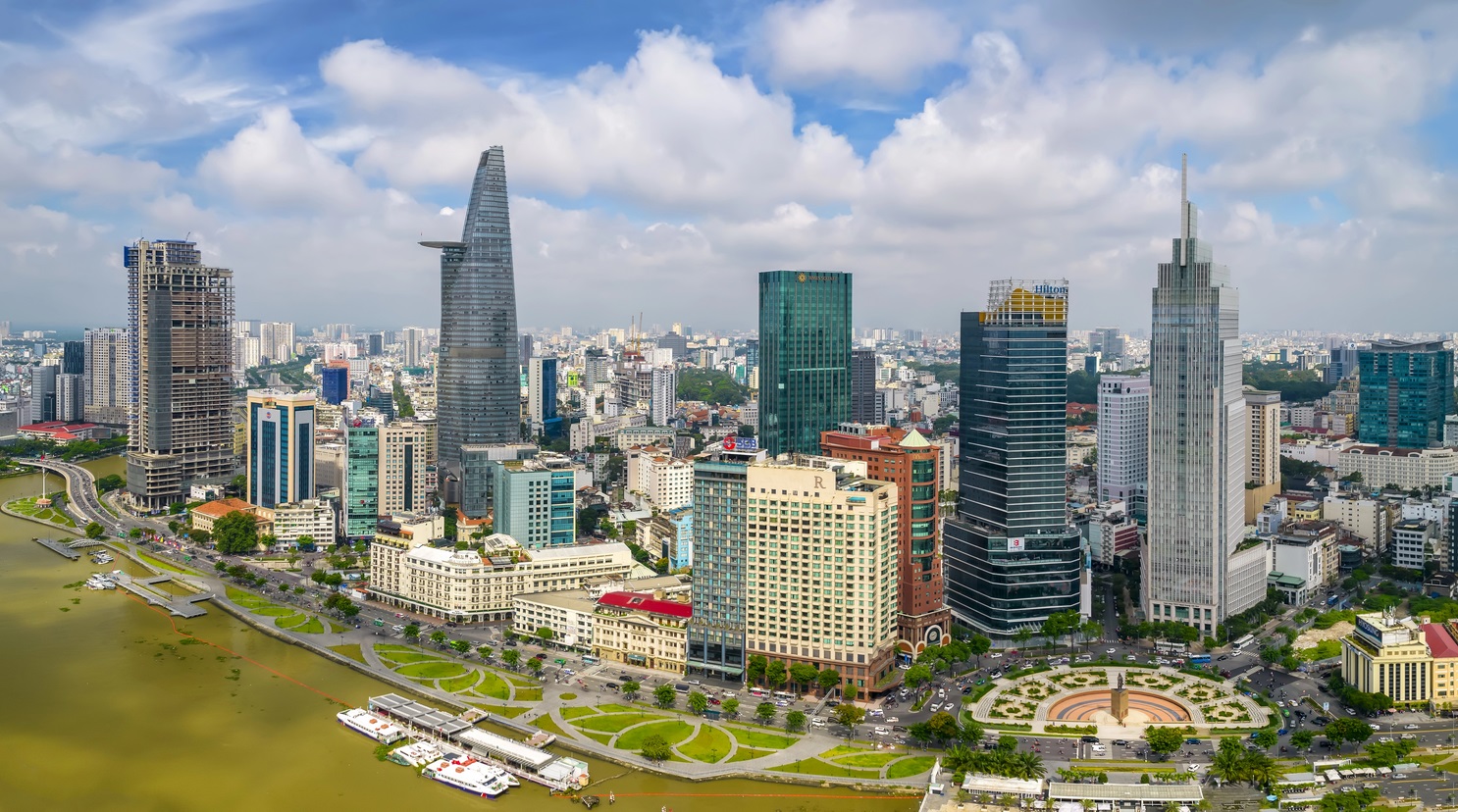13 Insights with Topic: 越南
Vietnam stands out as Asia’s best-performing equity market in 2025, fueled by earnings recovery, policy support, and surging public investment. More importantly, Resolution 68 marks the country’s boldest reform agenda since Doi Moi—streamlining bureaucracy, empowering the private sector, and deepening capital markets—creating structural upside beyond cyclical drivers. With infrastructure projects worth over 10% of GDP, robust FDI inflows, and the potential MSCI/FTSE upgrade unlocking sizable foreign flows, Vietnam offers a rare blend of near-term catalysts and long-term growth. In this article, our Partner & Co-CIO David Lai discusses how Premia Vietnam ETF offers investors a diversified, transparent, and cost-effective vehicle that has consistently outperformed active peers—positioning portfolios to capture one of the most compelling reform-driven growth stories in emerging Asia.
Sep 12, 2025
Emerging ASEAN stock valuation has likely overpriced the trade threat posed by the incoming Trump Administration. This has created a value opportunity that has priced a catastrophe akin to the COVID pandemic which is unlikely to play out. The forward PE ratio for the Dow Jones Emerging ASEAN Titans 100 Index is almost at COVID-19 lows. The valuation of the index also hit a low late in 2016, when Donald Trump was elected to the Presidency the first time. In tis article, our Senior Advisor Say Boon Lim discusses why the region could be a sweet spot for value investing, given the growth trajectory and drivers in Emerging ASEAN, which could be benefited rather than suffered from US tariffs.
Jan 07, 2025
Emerging ASEAN is one of the most compelling investment stories of 2024 – offering what is now an uncommon combination of growth and undervaluation. Having come to the end of its rate hiking cycle, with economic growth very much intact, Emerging ASEAN now benefits from tailwinds from a cyclical transition to stimulus amidst solid structural growth fundamentals. Vietnam in particular moved early and decisively in 2023 towards stimulus and its market is now favourably positioned with a PE to 2-year earnings CAGR ratio of only 0.36. In this article our Senior Advisor Say Boon Lim and Portfolio Manager Alex Chu discuss more about the fundamental growth drivers for this under-covered region, and how the end of the US rate hike cycle and the current valuation offer attractive opportunities for global and emerging markets allocators looking for uncorrelated alpha.
Dec 18, 2023
While many other economies have bounced back to trend growth, the latest IMF forecast shows that collectively the Emerging ASEAN-5 will likely have the strongest growth outlook among the major market/regional groupings. The IMF forecasts suggest that Emerging ASEAN-5 will likely grow its collective nominal GDP by 56% between 2022 and 2028, and will grow its nominal GDP from 72% of Japan’s GDP in 2022 to 92% by 2028. Their expected gain will be way ahead of those estimated for the Developed Market economies of the US, Euro Area and Japan. In this article, our Senior Advisor Say Boon Lim discusses the growth trajectory and drivers for opportunities in ASEAN, and why ASEAN is well placed to gain alpha while US is entering its final phase of the rate hike cycle.
Nov 20, 2023
In the US the “triple peaks” in economic growth, earnings growth and policy stimulus will likely result in much lower returns for US equities in 2022. The persistently high inflation – which will likely run hotter in the US than Europe and Japan – is already causing greater volatility as US equities are put on tenterhooks over the timing and magnitude of rate hikes. Meanwhile US Dollar could weaken on inflation rather than strengthen on higher Treasury yields. On the other hand, Emerging Markets, usually do better during periods of Dollar weakness but this time we could see a new twist - this favours China, supported by easier financial conditions. On top of all these, how is the Omicron Virus going to impact the global markets and what are the implications for global asset allocations in 2022? Why ASEAN would be a good diversification within Emerging Markets? Further to Part 1 of our 2022 outlook piece earlier, in this Part 2 sequel our Senior Advisor Say Boon Lim laid out the scenarios and discussed how we can reposition for the global shifts accordingly to address the transition to tightening and pivot from US equities.
Dec 16, 2021
After the smooth sail in 2020, 2021 has been a challenging year for investors with heightened volatility across global markets. Asia Pacific ex-Japan equities, Emerging Asia and in particular China had a good start until mid-February, but then returned all the gains and stayed largely flat on increasing regulatory headwinds in China, extended COVID-lockdowns in southeast Asia, threats of power crunch and credit defaults among Chinese property developers. On the contrary, benchmarks like S&P500, Nasdaq and Euro Stoxx 50 all reached new highs during the year, and Nikkei 225 hit its highest point in three decades. Meanwhile, the divergence in the fixed income markets went the other way, as global fixed income market suffered a mid-single-digit percentage loss in return, while China sovereign bonds bucked the trend with a high-single-digit percentage gain. Where do we go from here? Is the Omicron virus going to reset the path to 2020? And how do we decipher impacts of the Fed tapering, inflation and interest rate expectations, and economic growth and policy trends in China? In this article, our Partner & Co-CIO David Lai assesses the world economics and markets current standings, focusing on China and Asia, and discusses how to reconfigure for new opportunities that arise into 2022 as a year of the new normal.
Dec 08, 2021
Outperformer from first news of successful vaccines. Emerging ASEAN has been one of the best performers among major global equity indices since the start of November. And that was likely due to the region’s high economic leverage to normalisation after the distribution of COVID-19 vaccines and its high trend GDP growth rates relative to other Emerging Market economies.
Dec 24, 2020
Given the trade tensions and looming risks of de-globalisation, it is likely that China will embark on a different growth path in the aftermath of COVID, and increasingly rely on domestic demand to drive growth. This structural shift holds significant implications for EM Asia. In fact, ASEAN replaced the European Union as China’s biggest trading partner in 1Q20. And as a result of the increased tension and US protectionist measures targeting China, and pressure for MNCs to choose which one they side with under the pretext of protection against production disruptions in China, ASEAN and notably Vietnam are clear winners. But a more nuanced picture is closer to the truth. That is, the shifts in supply chains are more likely to be gradual than dramatic.
May 18, 2020
越南防疫佳績有目共睹,政府自4月23日以來循序漸進地鬆綁封鎖政策,儘管受全球疫情影響,其宏觀數據仍不如預期。越南政府於上週(5月15日)調整了原先設定的5%經濟增長率目標,根據不同假設情境制訂兩個方案:若主要貿易夥伴的疫情在今年第三季得到控制,則增長目標為4.4%-5.2%;若主要貿易夥伴的疫情遲至第四季才得到控制,則增長目標為3.6%-4.4%。越南目前的情況究竟為何?是時候復甦了嗎?本篇文章我們將針對多方面進行簡要更新。
May 18, 2020
Market has been focusing on the export side of Vietnam and how it will benefit from the trade war in the past few months. Of course, that is happening and more foreign companies from garments, furniture, packaging to electronics are setting up their factories in Ho Chi Minh, Honai, Bac Ninh, Thai Nguyen, etc. We, however, think it is worthwhile to consider another side of the growth story here: domestic consumption. The continuing economic growth, rising of middle class, and increasing urbanization will all help consumption to grow significantly in Vietnam ahead.
Aug 26, 2019
Vietnam is seen as the country benefited from the trade war between China and the US. Samsung is assembling half of its mobile phone in Vietnam and Apple is also beginning to start the production in the nation, so it is not surprising if your next iPhone will be made in Vietnam. Investors are enthusiastic about the bright prospects of Vietnam as major upcoming world factory, but Trump’s recent critics lead to a concern if this Southeast Asian country may become the next victim of trade war. We will elaborate further about the trade situation of Vietnam at the moment, the outlook in near future, and the market reaction in this article.
Jul 31, 2019
越南近年來一直是市場熱議的投資標的,我們將在本篇文中用七張圖,帶你看懂為何投資人鍾情越南市場。Premia MSCI 越南 ETF 將在7月18日上市(按最終批准為準),屆時將為投資者提供更具效率的越南市場投資工具。
Jul 04, 2019







